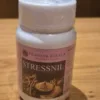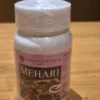Bronchitis
Bronchitis (Ayurvedic Name – Tamak Shwash) bronchial tube or Bronchi is the Air-Tube or Air passageway, which carries the air to the lung in Human Body and when it gets inflamed or Swollen then you end up with nagging cough and mucus, this condition called ‘Bronchitis’. In this same way Bronchitis is co-related to ‘Swas Pranali Shotha’ in Ayurveda, where ‘Swas- Pranali’ means Bronchial Tube, ‘Shotha’ means Inflammation.
Bronchitis may lead to bronchial asthma if untreated and is characterised by hyper-responsiveness (an abnormal degree of responsiveness, as to a physical or emotional stimulus) of trachea -bronchial smooth muscle to a variety of stimuli (contraction of tracheal smooth muscle), resulting in narrowing of the air tube, often accompanied by increased secretion and mucosal oedema (airway inflammation).
[Note-Trachea divided into the right and left main Bronchi]In general, bronchitis is a medical term that represents the inflammation in the bronchi or larger airway of the lung, may be due to infection or maybe another immune process in the lungs but as per an aspect of symptoms of bronchitis overlap with the characteristic of asthma.
The main difference between bronchitis and bronchial asthma is asthmatic cough is usually productive and brought up the sputum but the bronchial cough is non-productive with no sputum.
Etiological Factors of Bronchitis
- Virus or accumulation of toxins in tissues blocking circulation
- Weak or poor nutrition
- Exposure to polluted wind, dust, smoke
- Trauma to vital organ, throat, or chest
- Excessive exercise or stress
- Nervous system imbalance
- Mental and physical stress
- Low immunity or resistance
- Constant disruption in the natural biological rhythm
Bronchitis is of two types –
Acute Bronchitis
Commonly known as a chest cold or short-term illness, followed by cough, cold and viral infection, usually, it may last from a few to 8 to 10 days. It is more common but it doesn’t usually cause problems past that. Acute bronchitis may include
- Chills with a body ache
- The feeling of ‘wiped out
- Low-grade fever
- Sore throat with running nose
Chronic Bronchitis
Chronic Bronchitis is a more serious condition, it keeps coming back and doesn’t go away easily. Also called a long-term illness, defined as a productive cough with excessive mucous, it may last for 3 months or more and it may be associated symptoms with COPD (Chronic Obstructive Pulmonary Disease).
Symptoms of chronic bronchitis:
- Constant cough with mucus (white or yellow or green)
- Shortness of breath or difficulties in breathing
- High grade of fever
- Wheezing or whooping cough (whistling sound at the time of breath)
- Chest discomfort or congestion, feeling of full or clogged
- Difficulty in speech
- Scratchy throat
Ayurvedic Concept with Management
In Ayurveda Scripture, Bronchitis is known as ‘Swasa Pranali Shotha’, which means Bronchial Tube Inflammation, it’s the passageway of air to the lung or ‘Wind pipe’ and explained under ‘Kasa-Roga’ i.e. ‘Kasa’ means Cough, ‘Roga’ means Disease
According to Ayurveda, ‘Swas Pranali Shoth’ happens due to primarily impaired Digestion. Impaired digestion is caused by the formation of ‘Ama’(Toxins) which is resulted from the imbalanced state of Tridosha I.e. Vata, Pitta, and Kapha dosha, and mainly in this condition Vata and Kapha dosha are aggregated.
Note- Vata, Pitta, and Kapha are three Doshas in the body, which control the functioning of the Body.
Ayurveda explained the difficulty in Berthing and Shortness of Breath as ‘Tamaka Swasha’ which is co-related to Bronchial Asthma. Its explained as a Chronic Inflammatory disease of the airway, that leads to recurrent wheezing, Breathlessness, tightness of the chest, and cough, particularly at night or early morning.
As per Ayurveda, ‘Swasa’ (Breathing) is mainly caused by the Vata and Kapha doshas. Swasa-Roga(Disorder of Respiratory System) is broadly classified into five types:
- Mahaswasa (Dyspnoea major),
- Urdhawaswasa (Expiratory Dyspnoea),
- Chinna swasa (Chyne- stroke respiration),
- Kshudra swasa (Dyspnoea minor),
- Tamaka swasa (Bronchial Asthma).
In Ayurveda, ‘Tamak Swasa’ is an allergic condition from the reaction of the body to one or more allergens and is the one most fatal respiratory disease and its seat of manifestation is the lung.
Pranava Kerala Ayurveda Clinic’s Approach To Managing Bronchitis
At Pranava Kerala Ayurveda Clinic, the first line of treatment is a balance of Vata and Kapha dosha, because it is Vata- Kaphaj disease means the use of those herbal drugs which have the property to pacify the Vata and Kapha dosha and bring them in the order or balanced state.
Treatment mainly includes:
Rejuvenation Therapy and treatment with mild herbal enema aim at removing the toxins and opening circulation to loosen impurities embedded in tissue.
Abhyanga is an Herbal oil massage with specific medicated oils that are individually prepared as per the patient condition and constitution to provide a deeply soothing and balancing effect for the entire physiology.
Treatment opens the channel of circulation and elimination of toxins, so proper nourishment will reach the tissue to aid their repair and development.
Pranava Kerala Ayurveda Clinic’s approach toward treatment is to rejuvenate the innate healing response of complete mental and physical healing.
Diet and Lifestyle Advice by ‘Pranava Kerala Ayurveda Clinic’
Alcohol and tobacco are contraindicated, and easily digestible food should be preferred. A cold diet like ice cream, cold drinks, and sour food items like pickles and curd should be avoided. Avoid stress or tensions. Practice respiratory exercises advised by the physician, pranayama, yoga, etc. Use lukewarm water and goat milk, if available.
To find out more about how Ayurveda can help with the above condition, visit Pranava Kerala Ayurveda Clinic or call 0208 907 7902 to book an appointment with an expert Ayurvedic Practitioner.
Medical Advice Disclaimer
DISCLAIMER: THIS WEBSITE DOES NOT PROVIDE MEDICAL ADVICE
The information, including but not limited to, text, graphics, images and other material contained on this website are for informational purposes only. No material on this site is intended to be a substitute for professional medical advice, diagnosis, or treatment. Always seek the advice of your physician or other qualified healthcare providers with any questions you may have regarding a medical condition or treatment and before undertaking a new health care regimen, and never disregard professional medical advice or delay in seeking it because of something you have read on this website.




